Vranec holds the key to prosperity in the future of wine in Macedonia. Vranec (Vran etz) is a red grape brought here from Montenegro, and it represents 50% of red wine produced in Macedonia. I have never been to Macedonia and as of yet have never tasted any of their wines, but I have a great interest in learning about any wine producing country unfamiliar to me. Read on if you would like to learn about the rest of my wine story……. and the significance of “rice and beans”!
The Republic of Macedonia is another one of those former Yugoslavian states in the Balkan Peninsula of southeastern Europe that gained independence in 1991. It is distinct from ancient Greek Macedonia although the two do share a border for more than 100 miles. The Macedonian Republic is landlocked, separated from the Adriatic Sea by Albania and the Aegean Sea by Greece. It borders on Kosovo to the northwest, Serbia to the north, Bulgaria to the east, Greece to the south and Albania to the west. This country is home to over 2 million people and is just slightly larger than Vermont. The climate ranges from plenty of sunshine and Mediterranean to continental breezes.
“Macedonia” is the oldest surviving name of a country in the continent of Europe. There has been an ongoing dispute over the name of the country between Greece and Macedonia for many years which was officially settled with an agreement in June 2018. Both countries signed the historic Lake Prespa accord that changed the official name to the “Republic of (Northern) Macedonia”. There is still major confusion between the two countries; i.e. Greek Macedonia and the Republic of Macedonia, especially in the wine world. As I was internet searching for Macedonian wine, one had to be very careful to check for country of origin – Greece or Macedonia – as they are sometimes both listed under Macedonia.
The current country geographically corresponds to the ancient kingdom of Paeonia, which was just north of the ancient kingdom of Macedonia. It has bounced back and forth from Persian to Roman rule, then Byzantine to the Ottoman empires. After World War I, it became part of the Serbian Kingdom of Yugoslavia until republic status in 1945 as the Socialist Federal Republic of Yugoslavia in 1963. The country’s ethnic groups consist primarily of Macedonians and Albanians, then Turks, Serbs and others.
Macedonia is popularly called “the Pearl of the Balkans” and has scenery equal to many of its picturesque European neighbors. It is a natural paradise of vineyards, mountains, lakes and rivers among historical ruins and villages that have been practically unchanged for centuries. There are three large lakes – Ohrid, Prespa and Dojran – each divided by a frontier line, and the Vardar River bisects the country. Major wine production takes place in the Vardar River Valley.
Rice and beans
Tavče-gravče or Macedonian baked beans is considered the country’s national dish. You will find it on most restaurant menus. It goes well with cheeses, fish, salads and classic local meat dishes. Macedonian food is strongly influenced by Turkish and Mediterranean cuisine which includes lots of fresh vegetables. This is the land of ajvar (roasted red pepper spread), stuffed bell peppers, burek, goat cheese and freshwater fish. Turkish coffee reigns supreme.
Macedonia is also famous for its rice crop. The “white gold”, produced in Kochani in eastern Macedonia, is the first protected product since 1999 marked as “Made in Macedonia”. It is also the only crop exported from the country.
Winemaking in Macedonia
Macedonian wine culture has ancient roots in the Greek and Roman empires. According to Ivana Simjanovska, Macedonia’s premier wine expert, there is archaeological evidence that proves people were growing grapes here in the 13th century BC! Wine growing is thought to date back 4000 years, making it ONE of the oldest wine producing regions in the world. Documents dating back to the time of Alexander the Great can attest to this theory. During the Roman Empire, rulers preferred Macedonian grapes for their wines.
Thirteen large wineries were created in the Republic of Macedonia during the socialism regime, started with barrels and equipment nationalized from different families. There were also more than 30,000 families that owned small vineyards. They sold their grapes to the thirteen large wineries. Privatization of the old wineries began once the Republic of Macedonia separated from Yugoslavia.
Macedonia has 16 administrative districts which are also named as wine regions. There are three main wine regions further broken down into the sixteen districts. The various microclimates, soils and winemaking philosophies allow Macedonia to produce crisp, fresh whites, luscious sweet reds, roses and even some sparkling. There were 84 registered wineries in 2014 up from just 28 in 2003. European Union countries received 66% of the total wine exported. The rest went to southern European non-EU countries.
Macedonia is a PGI Protected Geographical Indication for wine in the EU. The districts are protected through labeling regulations. Wine is produced on 55,000 acres with an additional 74,000 acres devoted to growing table grapes. Private wineries are what have brought up quality of Macedonian wine due to sophisticated technology, highly educated enologists, and working hard to be in a competitive market. Marketing and advertising has been improving, and they are now embracing sustainable eco-tourism.
What is the biggest problem with the Macedonia wine industry? Probably that Macedonia is not well known as a country, let alone as a wine country. They sell bulk wine, but it is hard to get the high-quality wine out to consumers of higher quality wines. 98% of wine made during Yugoslavian time was poor quality bulk wine thanks once again to socialism. Macedonia accounted for about two-thirds of wine production when it was part of Yugoslavia. 80% of Macedonian grapes were exported in bulk and bottled somewhere else in Yugoslavia or other countries. Winemakers have been trying to get rid of that image during the past 10 years with their quality instead of quantity wine.
The eighty-four officially registered wineries in Macedonia have a total capacity above 220 million liters with the majority of wineries located in the Povardarje region. About 30% of grapes are still harvested by families for their own home production and consumption of wine and grape brandy.
Some wineries in Macedonia date back more than a century, but here are a few of the most notable wineries currently in operation
Bovin – The first privately built winery.
Tikves – The biggest winery on all of the Balkans and oldest in Macedonia.
Stobi – The newest and most modern winery in the country.
Skovin (Skpoje) – One of the oldest and second largest in Macedonia.
Chateau Kamnik – Most award winning winery.
Popova Kula – It’s a combination of old design and style with modern facilities plus it is known for rescuing the grape Stanušina from near extinction.
Grapes in Macedonia
Macedonia has 28 grape varieties, according to winesofmacedonia.mk. A large number are indigenous varieties plus varieties common to Central Europe and Balkans and some international varieties. Vranec and Kratoshija are the primary red grapes to know. Smederevka is the primary white grape. Currently red wine makes up 80% of production.
Macedonia white wine can be fresh and fruity ideally consumed young but there are also heavier whites with tropical flavors. Reds are spicy and full-bodied with some similarity to Bordeaux and California. These are the main grapes you will read about in each wine region.
White grapes
Smederevka is the leading white grape variety for production in Macedonia. It is one of the oldest varieties in the Balkans with unconfirmed origination in Serbia. Smederevka is planted in almost all Macedonian wine districts where white grapes are grown. The grapes are big with oval shape and thin translucent and hard skin with greenish-yellow color. It makes wine with a delicate aromatic fruity profile, low in alcohol and best drunk young. It pairs well with light appetizers, white meat, cheese, fish and green salads. Rakija, Macedonian brandy, is also made from Smederevka. 60% of white grapes grown in Macedonia are Smederevka.
Žilavka is planted in the warmer regions of Veles, Tikves, Ovche Pole and Strumica-Radovish. The grapes are sweet and refreshing with a fruity flavor and aroma and produces top quality wines with intense smell and taste. This dry white wine can be paired with seafood, pasta, white meat, cheese and desserts. It is also used as a blending grape and for making brandy.
Temjanika is highly aromatic with Muscat-like character grown mainly in Tikvesh and Veles wine districts. Temjanika (named after temjan or frankincense) makes both sweet styles of wine from raisined grapes as well as dry single varietal wines. It makes highly prized and structured complex wines with spicy aromas, fruit scents of peach, apricot, plum and orange at the beginning with flavor of incense following later. A great pairing is a white meat, seafood or dessert.
Zupjanka is a cross between Prokupec and Pinot Noir, originally from Serbia, but grown throughout Macedonia. It is characteristic for a highly acidic content that make fresh, full wine with a gentle wine bouquet. Fresh seafood, oysters on the half shell and grilled Mediterranean vegetables are perfect pairings. It is great for blends but some single varietal wines are now being made.
Rkaciteli (ree kaht see TELL ee) is a peppery spice, floral aroma and peachy fruit grape from Georgia widely planted throughout the Balkans. It was introduced into Macedonia around the 1950’s and was mostly planted in the Vardar River Valley. The wines are characterized by fresh and distinctive flavors of apple, pear, apricot, mango, peach, grapefruit and pineapple. Pair it with some neutral cheese, prosciutto, white meat or a green salad. It can be very expressive when grown in cooler areas of Macedonia.
Traminer – An intensely aromatic grape also known as Savagnin Blanc and is a variant of Gewurztraminer. No, that is not a typo for Sauvignon Blanc – it’s an entirely different grape.
The international varieties of Welschriesling (Laski Rizling), Chardonnay, Sauvignon Blanc and Grenache Blanc (Belan) are also grown in Macedonia.
Red grapes
Vranec, (Vran etz) the black stallion grape, probably originated in nearby Montenegro but is the most common variety in Macedonia. It is THE most important and leading variety for red wine in Macedonia. Vranec also means raven colored or black which is why the wine is also known here as “black wine”. Wines made from Vranec are recognizable and distinctive in color and make a unique brand for Macedonian wines exported on a global level. Over 50% of the reds produced here come from this grape. Vranec makes wines that are dense, deeply colored red, full-bodied with red fruit, and aromas ranging from sour cherry, blackberry and blackcurrant to chocolate, mint, licorice, and vanilla. Its high tannin content and good levels of acidity make Vranec wine a good candidate for oak aging. It is often mistaken for but closely related to Primitivo. Vranec is also a blending grape with Merlot, Cabernet Sauvignon, and Syrah. All Macedonian dishes as well as red meat, game, BBQ and smoked meat pair well with Vranec.
Kratoshija (Krat oss SHEE yah) is the second most important Macedonian red grape. It has been grown here since ancient times. The genetic origin of Kratoshija is supposedly the same as Zinfandel, Primitivo and Crljenak Kashtelanski or Tribidrag in Croatia. It is quite a versatile variety and can make easy fruity wine like the Beaujolais style or it can make more complex wine in the Bordeaux style. The best wines are light red color and violet hue, relatively high alcohol, reasonable acid, and fruit aroma eventually becoming spicy. It pairs really well with BBQ meat and piquant cheese.
Stanušina Crna is a unique variety capable of producing very high quality wines, and is very popular on the domestic market. This is the only variety proven to be indigenous solely to the Tikvesh region of Macedonia. You will not find it anywhere else! It was the main variety in Tikves before phylloxerra, and its existence has been threatened by the planting of international varieties. Thank goodness, the Popova Kula winery has made it their mission to give this grape all of the attention it deserves. They produce rosé wine from Stanušina. The wines are usually pale with rich extract and high acidity and people who know about it, make sure to buy it when visiting Macedonia. It has an intense aroma of strawberry and raspberry and pairs well with light and creamy puddings, lettuce, and other light dishes.
Cabernet Sauvignon, Merlot, Pinot Noir, Plavec Mali and Syrah are also grown here.
Macedonia’s three wine- growing regions:
Povardarje, Peinja-Osogovo, Pelagonija-Polog
Povardarje (Central Region)
Povardarje, or the Vardar Valley, is the most important region of Macedonia. It is located in the valley of the Vardar River and produces 83% of the country’s grapes and wine. This is the heart of the Balkans and a major transit zone of the Balkan Peninsula. It is influenced by both Mediterranean and Continental climate and has 260 sunny days during the year making it perfect for viticulture and winemaking. There are currently 21,000 hectares of vineyards and over 26,000 families dedicated to producing grapes.
The Indigenous white varieties of Smederevka, Temjanika, Belan, Zupjanka, Zilavka and reds Kratoshija, and flagship Vranec all are grown here.
There are seven districts in the Vardar River Valley: Skopje, Veles, Tikves, Ovche Pole, Kochani, Strumica, Gevgelija. Sixty-nine officially registered wineries (out of 84 total) annually produce 850,000 hl of wine in Povardarje.
Tikves District
Tikves is the most well-known wine district in Macedonia. It is also the top producing wine area and yields the highest-quality wine. Tikves District is in the central part of the country near the Vardar River, the wine heartland of Macedonia, and has been making wine since the fourth century BC. The Tikves district is on the same latitudes as Rioja and Ribera del Duero. Grape growing conditions are ideal here.
Tikves has nearly 13,000 hectares of vineyards and grows one-third of Macedonia’s grapes. 80% of Macedonia’s wineries are in Tikves District and many offer wine tasting. They grow at least 20 different grape varieties including Vranec, Kratoshija, Kadarka, Cabernet Sauvignon, Cabernet Franc, Merlot, Pinot Noir, Syrah, Zilavka, Zupljanka, Grasevina, Plavec, Smederevka, Chardonnay, Sauvignon Blanc, Muscat Ottonel, Rkaciteli and Riesling. There are 37 wineries in Tikves.
Tikves Winery is the largest winery in Macedonia and named after the Tikves wine district. It has over 500 hectares of vineyards and yields up to 20 million liters a year of red, white, and sparkling wines plus non-alcoholic beverages. Tikves dates back to 1885 making it the oldest winery in the country. It was known for T’ga za Jug wine, a once famous export of Macedonia. T’ga za Jug is a semi-dry red wine made from late-harvested Vranec, and was once the most popular and most sold wine throughout the Balkans. All this changed when private investors purchased Tikves in 2003 and changed the focus to making quality wines, not mass produced juice. You can still buy T’ga za Jug! Tikves is also the biggest winery in Southeast Europe.
Tikves has been defining site-specific locations to make elegant premium wines. For example, the Barovo site is high up in the Kozuf Mountain and produces elegant wines from Kratoshija and Vranec from 40 year old sustainably grown vines. There are also whites Belan (Grenache Blanc) and Chardonnay making very distinctive complex wines.
The Bela Voda single vineyard is nearby and grows Vranec, Plavec, Belan and Chardonnay. Bela Voda wines have been receiving critical acclaim by Robert Parker and other well-known wine critics – 94 points in 2011 and 91 points in 2013. According to Robert Parker, the 2013 tastes “like a Southern Rhone blend with its spicy, licorice and black raspberry/cassis-dominated bouquet” and is inky-colored “medium to full-bodied, supple and sexy, with good acidity and a great finish. Made from equal parts Plavec and Vranec that was aged in 75% new barrels”.
Bovin, the first boutique and privately built winery in Macedonia, was established in 1998. Brothers Kiril and Gjorgji Bogevski own the winery and have taken it from 120,000 bottles of high quality award winning wines to its current capacity of 1.5 million bottles and over 34 wines. Their percentage of wines exported has continued to climb and can now be found on five continents and 36 countries including USA. However, that still does not mean you can easily find a bottle to taste. As usual, I find that internet searching is generally required for wines from “exotic” wine countries and with that, few options can be found.
Bovin produces 80% from their own 60 hectares of prime Tikvesh vineyards and 20% from other vineyards using only environmentally friendly practices. They use carefully controlled fermentation and modern production equipment. Bovin wines are considered some of the most exclusive and highly valued wines in Macedonia. They have won over 100 regional and international awards. Bovin grows Cabernet Sauvignon, Merlot, Vranec, Cabernet Franc, Shiraz, Sangiovese, Petit Verdot and Tempranillo reds and Chardonnay, Muscat Temjanika, Pink Traminer whites. Approximately 70% of production is red wine and 30% is white. All Bovin wines are high quality and most bottled in .75 liters. They produce reds, whites, rosés, late harvest dessert wines, and brandies. Bovin offers tours of the vineyards and has a bed and breakfast.
Stobi Winery is one of the more modern and was established in 2009. It is located near the ruins of the ancient city of Stobi in the Tikves wine district where the Vardar and Crna Rivers cross paths. It has over 600 hectares of land and produces up to 4.5 million bottles of wine per year from Riesling, Chardonnay, Muscat Ottonel whites and Pinot Noir, Vranec, Merlot, Cabernet Franc and Shiraz reds. Stobi was a huge cooperative when purchased by the Jordanova family. They were the first winery in Macedonia to start producing wine from their own grapes. They have 600 acres of grapes split into two different wine regions. They pick grapes manually to keep with the old traditions, but once the wine gets to the winery, it’s all about a modern high tech system of production. This keeps the mix going between traditional and modern ways. There are more than 280 sunny days in this part of Macedonia, with a very hot summer that has a wind that protects the grapes from disease.
Their vineyards are 25 or 40 years old depending on the grape. Stobi likes to accent the indigenous grapes Vranec and Zilavka, Smederevka and the Georgian grape Rkatsiteli and produces more than 25 different labels. Other varieties include Temjanika, Chardonnay, Zupljanka, Muscat Ottonel, Italian and Rhine Rieslings, Cabernet Franc and Sauvignon, Merlot, Pinot Noir, Petit Verdot, Syrah and Prokupec. They divide their wine into four different categories: premium, classic, elite and traditional. The winery can produce 5 million liters, of which 220,000 liters are aged in oak barrels. Lucky for us, they export to the USA!
Popova Kula Winery was established in the mid-2000’s by Jordan Trakov, a former investment banker, who modeled the vineyard after CA wine country. It produces rich reds and fresh, dry whites. Popova also has a restaurant, hotel and wine tasting cellar.
The winery is named after a very important tower, the Popova Kula “Priest’s Tower” which served as a checkpoint on the old Roman road that passes next to the winery. They use small stainless tanks for fermentation and barrels of American, French, Hungarian and Macedonia oak with different degrees of toasting for aging. Their first harvest was in 2005 and most of the wines produced were award-winning.
Popova produces wine from eleven different grape varieties including Vranec, Prokupec, Cabernet Sauvignon, Merlot, Sauvignon Blanc, Temjanika, Chardonnay, Zilavka, Muscat Ottonel and Muscat Hamburg. Their most famous grape is the Stanušina, which Popova Kula resurrected from near extinction. While they believe in the values of globalization of grapes such as Chardonnay, Cabernet Sauvignon and Merlot, they strongly feel that wine consumers all over the world should have the opportunity to taste and enjoy some of the near-extinct and more exotic grapes that exist. We applaud them for that effort!
Stanušina grapes belong to the Black Sea family of varieties, and they have been cultivated since ancient times. The name can be translated as “old sprout”, “yellow sprout” or “grandfather’s sprout” and the grape itself is rust-colored, of medium size and form medium-to-large bunches. They are usually harvested late, hand-picked, and then traditionally crushed by foot in copper basins before being moved to large wooden vats for fermentation. It ferments with grape solids until ready to be consumed. Stanušina grapes are also used to make madzun, another beverage used to cure liver problems and respiratory infections and as a sugar substitute in cooking.
Since the risk for extinction of Stanušina grapes is very high, the Slow Food Foundation for Biodiversity is working with producers to develop a production protocol that will ensure the high quality of the grapes and promote them on the national and international market.
Slow Food?
According to their web page, the Slow Food Foundation for Biodiversity was inaugurated in Florence, Italy in 2003 for the purpose of coordinating and promoting Slow Food’s projects for food biodiversity across the world. The Foundation is active in over 100 countries and involves thousands of small-scale producers in their projects by giving technical assistance, training, producer exchanges and communication. It explores themes such as sustainable agriculture, raw milk, small-scale fishing, animal welfare, seeds, and GMOs. “The Foundation’s projects are tools to promote a model of agriculture that is based on local biodiversity and respect for the land and the local culture, is in harmony with the environment and aims to provide food sovereignty and access to good, clean and fair food for all communities.”
Is “Slow Food” new to you? No, it is not when your restaurant staff is on “slow speed”! We may joke about it, but it really was a movement born in Italy in the 1980’s when Carlo Petrini and a group of activists wished to defend the good unhurried life against the fast life and fast food of a McDonald’s Restaurant that was about to be built on the Spanish Steps in Rome. Their goal was “to defend the regional traditions, good food, gastronomic pleasure and a slow pace of life”. Today there are millions of people involved in thousands of projects in over 160 countries. The Foundation for Biodiversity is just a part of it. After two decades, the movement now embraces the connections between “plate, people, politics and culture”. Just like all other organizations, they depend upon membership fees and contributions from sponsors and institutions. A recent internet search of Slow Food USA listed 6 chapters in Florida. The SW Florida group has been active off and on through the years, and while once a local member, I am unaware of their current status.
Skopje District
Skopje is the capital of Macedonia, the largest city and a busy wine center. Grapes grow outside the city and several wineries have tasting rooms in historical areas of the city. The vineyards are influenced by a continental and sub-Mediterranean climate with hot summers and cold winters. The soil is mostly clay with stony sub-soils. Grape varieties growing here include Vranec, Cabernet Sauvignon, Merlot, Syrah, Prokupec, Chardonnay, Smederevka, Sauvignon Blanc and Muscat Ottonel. There are six wineries in Skopje with a total of 1,100 hectares planted.
Chateau Kamnik, founded in 2004, is the country’s most award-winning winery. Located in the Skopje Wine District, the estate owns 15 hectares of vines and has invested substantially in innovative winemaking researching techniques and development of new grape clones. Kamnik also owns a hotel and restaurant called The Hunter’s Lodge Kamnik. Grape varieties from Kamnik may include Arinarnoa, Cabernet Franc, Cabernet Sauvignon, Carménère, Chardonnay, Grenache Blanc, Merlot, Montepulciano, Pinot Grigio, Pinot Noir, Sangiovese, Sauvignon Blanc, Syrah, Temjanika and Vranec. Annual production is 100,000 liters and most wines age in American and French oak barrels.
Arinarnoa is a dark wine grape bred in 1956 in Bordeaux. Recent DNA testing reveals it to be the crossing of Tannat and Cabernet Sauvignon grapes. The name arin comes from the Basque dialect word “arin” meaning “light” and “arno” meaning “wine”. Not surprisingly, Arinarnoa makes wine with firm tannins and herbaceous flavors.
Skovin was founded in 1979 and produces 17 million liters of wine. They make more than 45 different wines, all of them classified in several production lines, each having different flavors and price tags. Skovin vineyards are well known for providing unique wine aroma and producing high quality wines. They also have a wine tasting cellar.
Brušani Winery is a small boutique winery in Skopje with vineyards in Tikves. It’s a very young winery, just 8 years old, and they crafted the first bottle of their wine from the indigenous varietal Stanušina. The owner’s grandfather planted that Stanušina over 75 years ago in the family vineyards in the village of Brušani. They now make just two wines, Stanušina and a Vranec Barrique.
Veles District
Veles vineyards lie along the Vardar River and between the mountain ranges. The warmer climate is slightly more sub-Mediterranean than continental. The terrain is hilly with wavy mild slopes and soil ranges from diluvial to brown. You will find Vranec, Kratoshija, Cabernet Sauvignon, Merlot, Chardonnay, Smederevka, Sauvignon Blanc, Riesling and Temjanika growing here. There are six wineries with 1,500 hectares of vineyards.
Chateau Sopot is a boutique winery in the Veles District founded in 2006. They make white, red and rosé wines including an excellent Cabernet Sauvignon. Capacity is 70,000 liters, focusing on quality and not quantity. Their mission is “the crafting of exclusive wines for wine lovers’ indulgence” and their wines are available only in elite restaurants and hotels in Macedonia and abroad.
Ovche Pole District
“The windiest place in the Balkans” is under the continental climate, but also has some sub-Mediterranean influence. It plays a significant part in Macedonian wine production with grapevines growing around cities like Sveti Nikole, Stip, Probishtip and Kochani north from the river Zletovo. Strong winds are blowing most of the year. Vranec, Cabernet Sauvignon, Merlot, Kadarka, Chardonnay, Grenache Blanc, Smederevka, Sauvignon Blanc, Muscat Ottonel and Zilavka grapes are grown on 2,000 hectares by eight wineries.
Imako Vino, the International Macedonia Company, was established in 1989 and built a winery in 2002 just outside of Štip by the Bregalnica River. Imako Vino continues with the ancient wine making traditions of many years ago. Now it is the third largest producer of wine in Macedonia with 10 million liters. Imako has a very interesting motto and guiding principle: “Any winemaker is able to produce good wine in little quantities. To make fine, quality wine for a vast number of people is the real challenge. In our opinion, it is winemaking in the true sense.” Not so sure I agree with their principle, but we certainly prefer to have quality wine whether for just a few or vast numbers. They have a non-industrial creative approach.
Their premium line of wines features Temjanika and Vranec, showcasing the 3000 plus years of Macedonia wine heritage. The Ultra Premium Line offers Graševina, Muscat white, Macedonia Port, Kagor, a dessert wine made of late-harvest Vranec and Vranec Black Diamond, a full-bodied dry red wine.
Ezimit Winery has owned and operated 400 hectares (988 acres) of vineyards in Štip since 1994. The winery has an annual capacity of 5 million bottles of which the main line features whites from Chardonnay, Muscat, and Sauvignon Blanc, a rosé and red wines from Cabernet Sauvignon, Kratoshija, Merlot, Pinot Noir, Plavec, Shiraz and Vranec. They also offer a premium selection of wines and a Limited Edition Series .
Strumica-Radovish District
This region is on the southeastern part of Macedonia and has a Continental sub-Mediterranean climate. It is hilly with alluvial mostly clay soil. There are three wineries with 2,200 hectares planted. Vranec, Cabernet Sauvignon, Merlot, Syrah, Chardonnay and Smederevka grapes grow here.
Grozd Winery cultivates 700 hectares of vineyards in Strumica. It can produce 12 million liters with most of the exports going to Serbia, Germany and Russia. They also make wines for the local market.
Tais is a sweet red wine made from Muscat Hamburg with intense and fragrant Muscat aromas and long taste and finish.
Mastika is a wine distillate made from select varietals with the flavor of anise and honey. Grozd use a recipe that dates back to 400 BC and their Mastika is award winning.
Dalvina Winery is just northeast of Strumica. The founders Delco and Lidija Baltovski established Dalvina in 2007 with the vision of an eco-friendly and sustainable system from vine to bottle. Grapes are hand-harvested by workers from nearby villages. A gravity feed system then carries the grapes from sorting, cleaning, destemming and crushing. This system saves on electricity, increases efficiency and decreases “handling” of the grapes. Dalvina uses the délestage (rack and return) wine making process for red wines. Full tanks of crushed grapes naturally allow the pulp, skins and seeds to gravitate to the top of the tank and form a cap. Wine is then pumped from the bottom and put into another tank, leaving only the “cap” in the first tank. The cap is then filtered to remove grape seeds, wine from temporary tank added back in, and wine, pulp and skins now ferment. This allows for more stable wines with enhanced color, less harsh tannins and fruitier flavors.
Dalvina owns and operates over 914 acres of vineyards with a winery capacity for 4.2 million liters of wine. They make white wines from Chardonnay, Riesling, Sauvignon Blanc, Zupljanka and Rkaciteli. Dalvina’s premium line of red wines from single varietals, called Tiver, is made from Cabernet Sauvignon, Merlot and Vranec. An extra special selection is the cuveè, Ar-magedon, a superb blend of Cabernet Sauvignon, Merlot and Vranec that is aged 18 months in oak barrels. A favorite is their Godsin line of wines made from the Muscat Trollinger (Black Muscat) grape. Normally, this varietal is used as a table grape or for making rakija in Macedonia. Dalvina has mastered a process for making two wines from the Muscat Trollinger, one is a semi-dry rosè and the other is an astounding ruby red.
Gevgelija-Valandovo District
This district has more climatic influence from the Aegean Sea than others of Macedonia making it typical for a sub-Mediterranean zone. Vines grown here in alluvial and diluvial, mostly dry clay soil rich with minerals, and enjoy hot summers and mild winters. There are a number of micro growing locations and you can find Vranec, Cabernet Sauvignon, Merlot, Smederevka and table grapes growing here.
Rigo Impex Winery was built in Gevgelija in 2000. They produce dry, semi-dry and sweet wines with an annual production of 14 million liters.
Kochani-Vinica District
The valley of Kochani is surrounded by high mountains from south, north and east, but the Vardar River makes low open areas from the west. The continental sub-Mediterranean climate makes for excellent rice growing conditions. Kochani, “the town of rice”, is situated here in this eastern part of Macedonia. Supposedly Alexander brought rice back from his 300 BC campaign in India. Wine production has moved farther southwest leaving behind a small amount of traditional wine production.
About 8 miles from Kochani, you will find Vinica (Vinitsa) which was once an important center for wine production. It was so important the name of the city comes from the word “wine”. While the wine industry has moved on, about 3% of Macedonia vineyards can still be found here. Vranec, Prokupec, Plovdina, Smederevka and Zilavka are grown on just 600 hectares.
Pčinja-Osogovo (Eastern Region)
Pčinja-Osogovo is located in the northeast of the country near the border with Bulgaria. It is the most mountainous part of the country with vines growing on mountain slopes. The weather is colder here with strong northern winds. Grapevines grow in alluvial and brown soil on limestone rocks. About 4% of the countries wine production happens here.
Pčinja-Osogovo is made up of three districts: Kumanovo, Kratovo and Pijanec. Kumanovo is the third largest city in Macedonia. Kratovo, “the City of Towers and Bridges”, is located in a volcanic crater on the western slope of the Osogovo Mountain. The three vineyards commonly grow the dominant red grapes Cabernet Sauvignon, Gamay Noir, Gamay Teinturier, Pinot Noir and Vranec and the white grapes Muscat Ottonel, Sauvignon Blanc, Šipon, Riesling and Žilavka.
Teinturier grapes are red wine grapes with dark skins and flesh unlike the usual red wine grapes that have clear flesh. Teinturier grapes are very uncommon. “Teinturier” is French for “to dye or stain”. In most cases, the squeezed grape juice is clear even from the most dark-skinned grape variety because the anthocyanin pigments are in the outer skin tissue of the grape only. The red color comes from the crushed skins of the grape over a period of days during the fermentation process whereas anthocyanin pigments are in the pulp of the grape itself in Teinturier grapes. Winemakers typically add a small amount of one of these grapes (Gamay Teinturier is one; some others are Alicante Bouschet, Chambourcin, Saperavi) to boost the color of a wine blend.
Pelagonija-Polog (Western Region)
Pelagonija-Polog is situated in the south and southwestern side of the country near Albania. It produces 13% of Macedonian wine. It is predominantly made up of plateaus and small mountains with a climate that is cold and humid winters with hot dry summers.
There are six wine districts: Prilep, Bitola, Prespa, Ohrid, Kichevo and Tetovo, and they commonly grow Cabernet Sauvignon, Gamay, Merlot, Pinot Noir, Prokupec and Vranec for red grapes and Riesling, Chardonnay, Sauvignon Blanc, Žilavka and Smederevka for white grapes.
Bitola is the second largest city in Macedonia and Prilep, fourth in size, is known as “the city under Marko’s Towers”. Marko was a Serbian medieval prince from 1371 – 1395. Lake Prespa is shared by Macedonia, Greece and Albania and is most famous for the agreement signed here in June 2018 officially recognizing the “Republic of (North) Macedonia” as a completely separate country from Greece. The Prime Ministers of Greece and Macedonia signed the accord on the Greek side and then – for the first time ever since the independence of 1991 – a Greek Prime Minister entered Macedonia where he had lunch with the Prime Minister of Macedonia! I hope they enjoyed wine from both Macedonia and Greek Macedonia!!
Ohrid District
Ohrid is a historic town on Lake Ohrid which is surrounded by mountains. It is a beautiful sight and the town and lake are one of 28 sites worldwide on the UNESCO World Heritage list. The famous Ohrid pearl is crafted from shells coated with very thin layers of emulsion from the scales of the local Plashica fish. You can buy these beautiful manmade handcrafted pearls from the Talevi and Filevei families. Supposedly the Queen of England wears pearls designed by the Talevi family. Or you can buy some knock-offs!
When you are not enjoying the town of Ohrid or looking for pearls, visit some wineries. Wineries line the shores of Lake Ohrid. We hear there is hardly a household in the region without a barrel full of wine and “Tsipouro” brandy which is distilled according to old family recipes and contains 40-45% alcohol.
KM-Vin is the smallest winery in Macedonia. It’s located in the Vevchani area of Lake Ohrid and produces red and white wines. You can definitely taste the difference in terroir between Tikvesh and Ohrid wine regions. Tikvesh is home for most red grape varieties, but Ohrid is perfect for whites. Milovan Kalanoski is attempting to showcase white wines here at KM-Vin. He is building a new winery and putting his stamp on wines from Lake Ohrid.
Help to tell the story of one of Europe’s last undiscovered wine countries.
The Republic of Macedonia is another one of those Eastern European Balkan countries that has been making wine almost since the beginning of time. For centuries it seemed to be part of some other country, but finally gained independence in 1991 as did Croatia, Slovenia, and several other ex-Yugoslavian Socialist countries. It has especially been a struggle for Macedonia to break free from the socialist mentality of cooperative vineyards and wineries that made bulk wine of poor quality and lots and lots of it to send off to other countries. While Croatia and several other countries have been making in-roads with international wine marketing, Macedonia is still known mainly for bulk wine that goes to British and German supermarkets. I thought this quote from Jovanka Cvetkova, winemaker at Winery Grkov, fairly well sums up the current status: “There’s a huge wine culture here, but we take it for granted. We’re not market oriented, we’re ex-socialist. So we’re modest and not good at marketing”. This quote appeared in a NY Times 2010 article, but my internet search for Macedonian wine proves that it is still true. Lucky for us and other winelovers of the world, some forward thinking winemakers are making world-class Macedonian wines and attempting to get them out onto the world stage for us to taste. Thanks to the larger, modern and most innovative wineries like Tikves and Stobi, Macedonian wine is now becoming available for adventurous winelovers to taste and enjoy. Should you have the desire to buy and taste some Macedonian wine of your own, it is going to be difficult but not impossible.
Several sources that I have found:
wine.com had several labels from Tikves available on my most recent search.
wine-searcher.com – You can find some bottles on this site from various stores across the US, but you cannot always find a store that will ship to you.
nextbottle.com – I have successfully ordered online from nextbottle.com. Prices and shipping were reasonable and they had several wineries that I was interested in.
I have not seen any Macedonian wine on the local big box wine store inventory and have not searched the boutique wine shops of Naples, but I believe that Stobi Macedon Pinot Noir is available at Whole Foods.
All of the information that I used to prepare this article is available on the internet, and there was very little of it at that. Wine research can be really challenging! Please accept my apologies if there is any incorrect data or information; I try to verify from several sources. Cheers………or as they say in Macedonia – ovacii!
Forkandcorkdivine.com
10.16.18

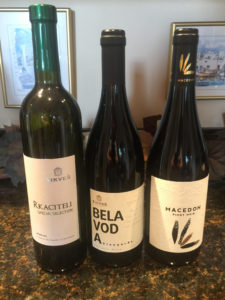
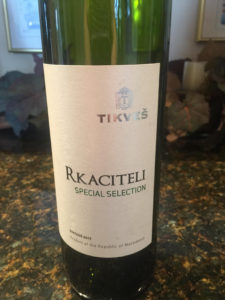
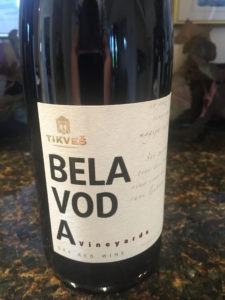
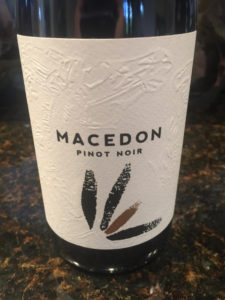
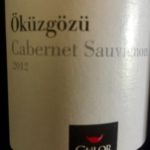
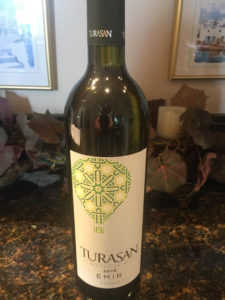
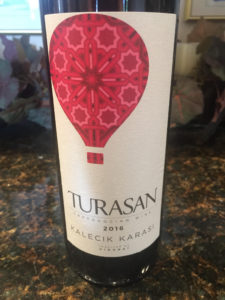

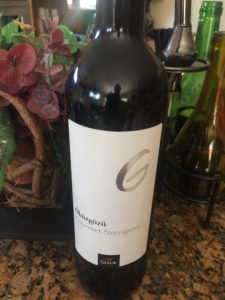
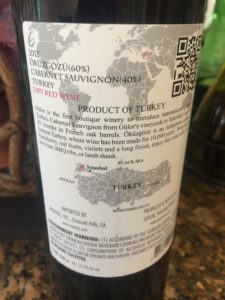
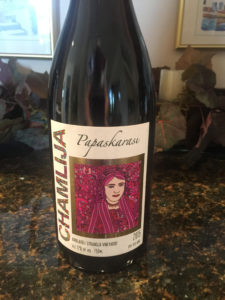

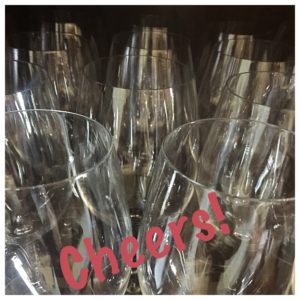

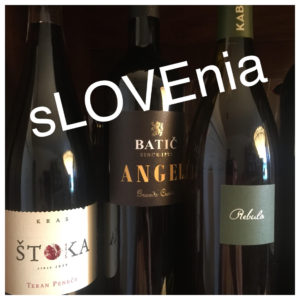

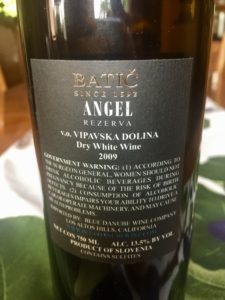
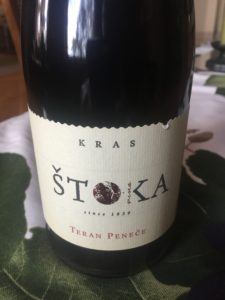
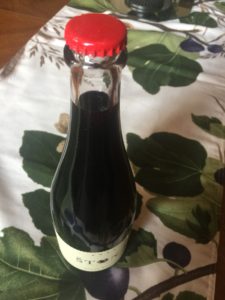

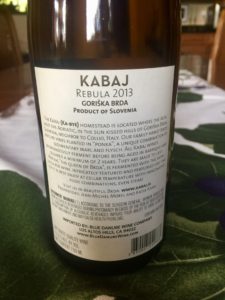
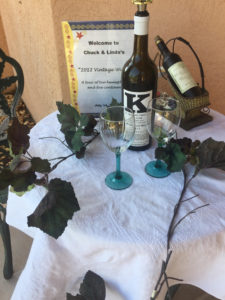
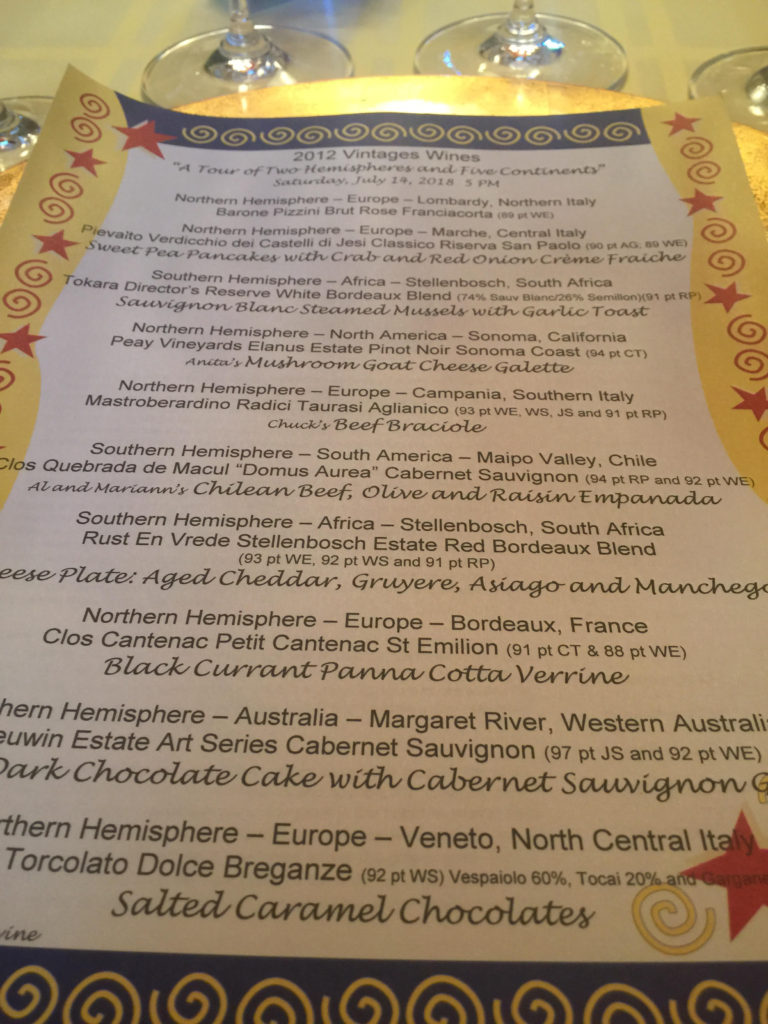
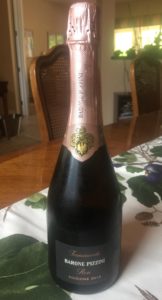
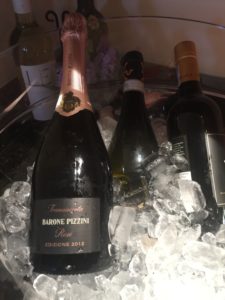
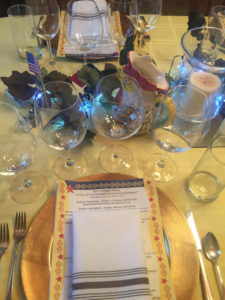


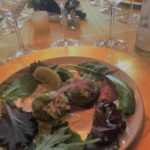
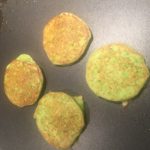

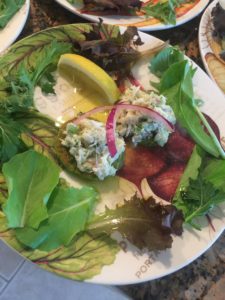
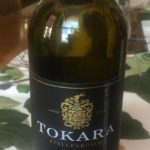
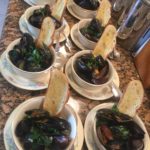
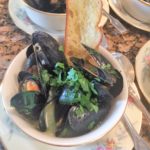
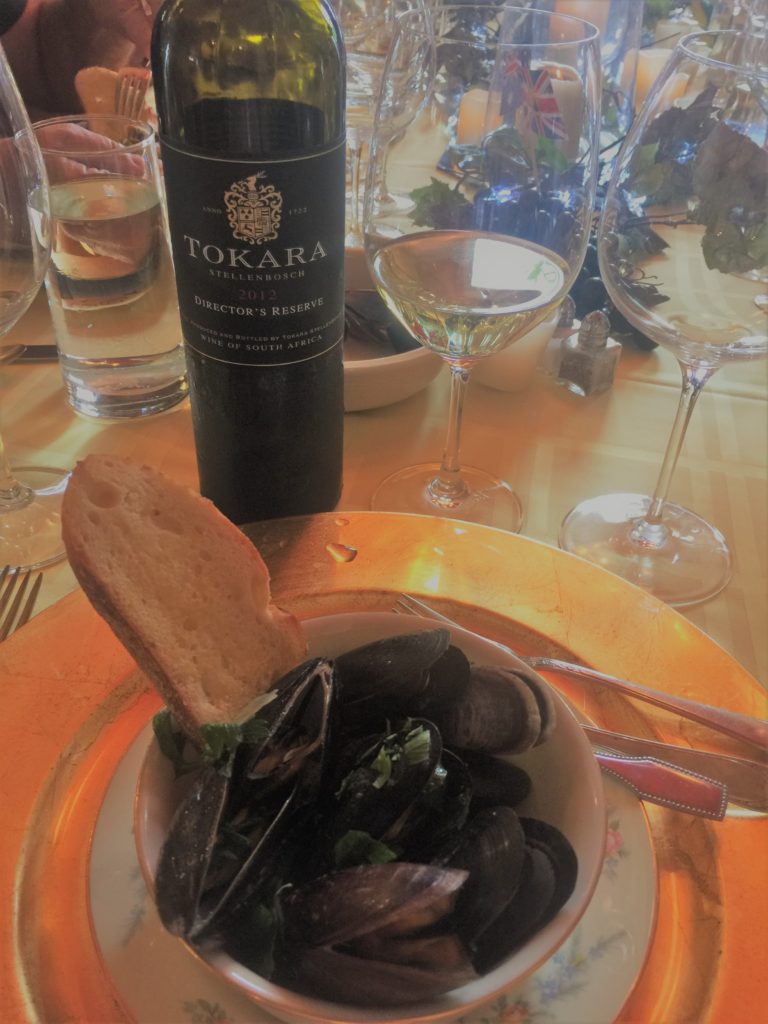

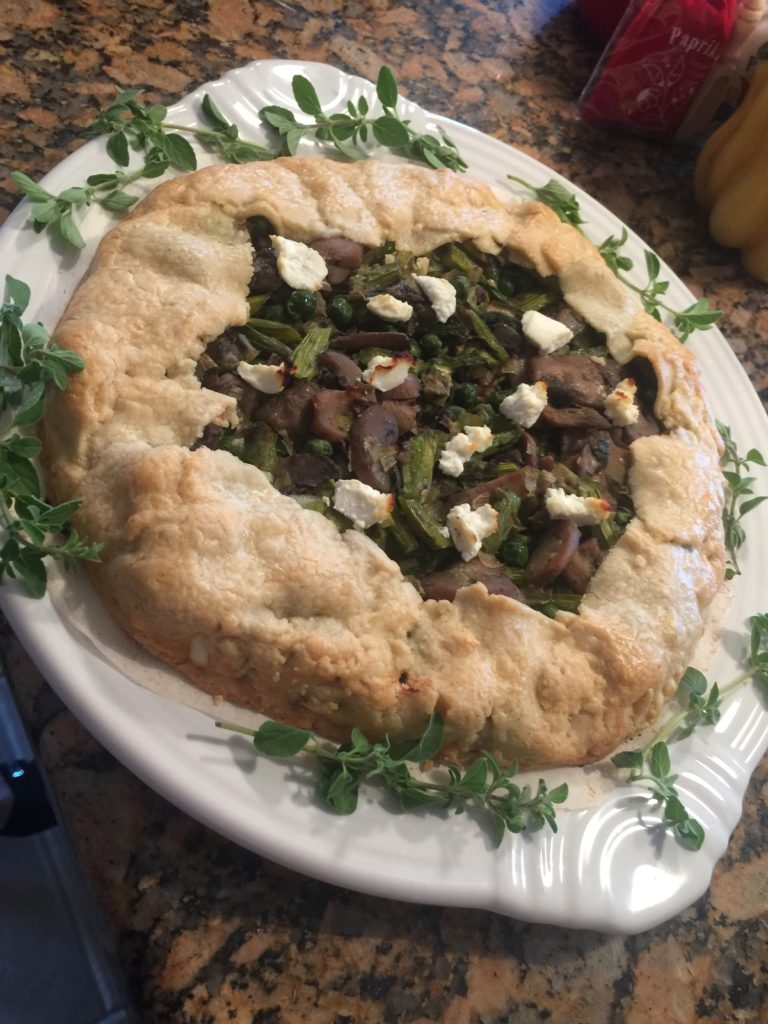
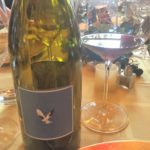

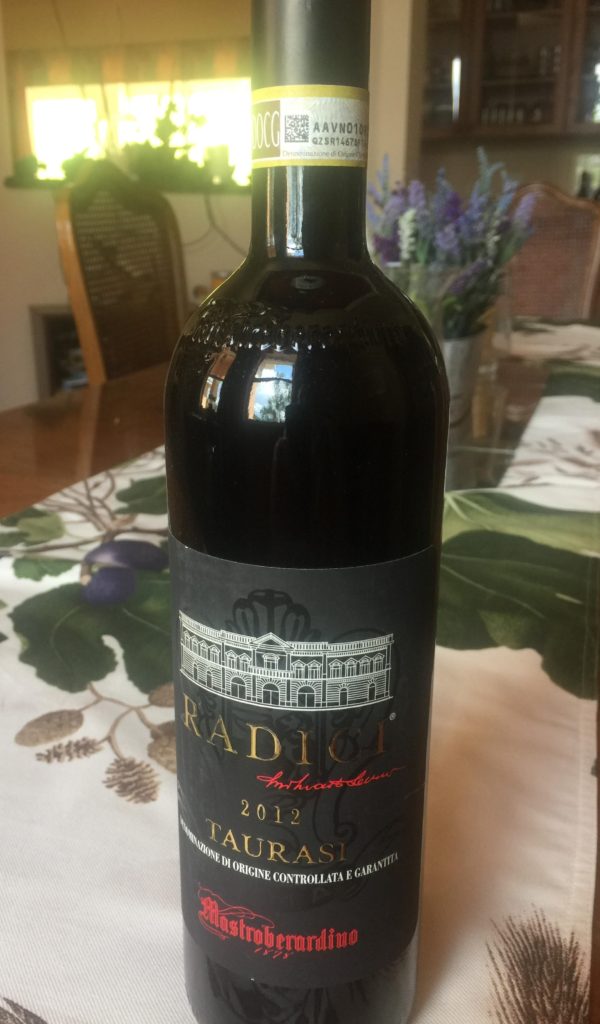
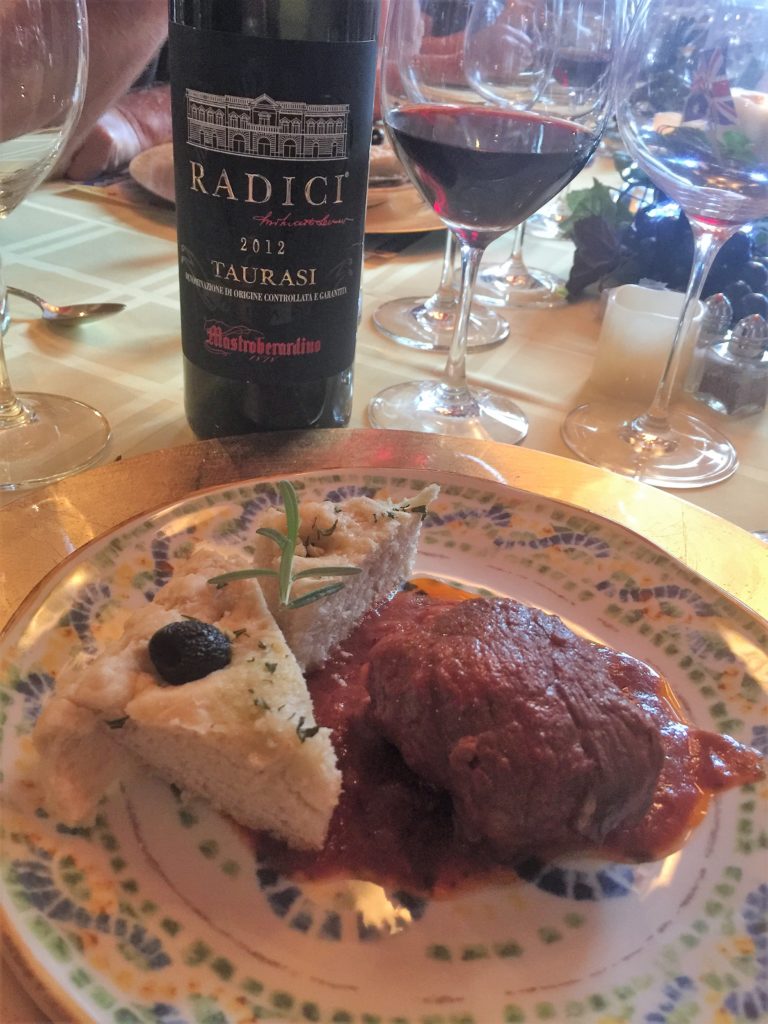
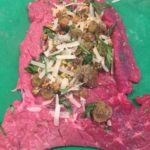
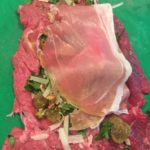

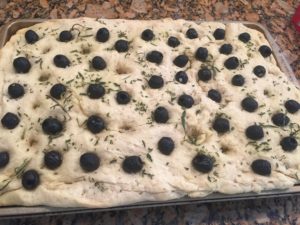


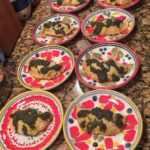
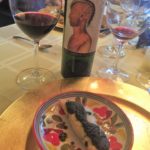

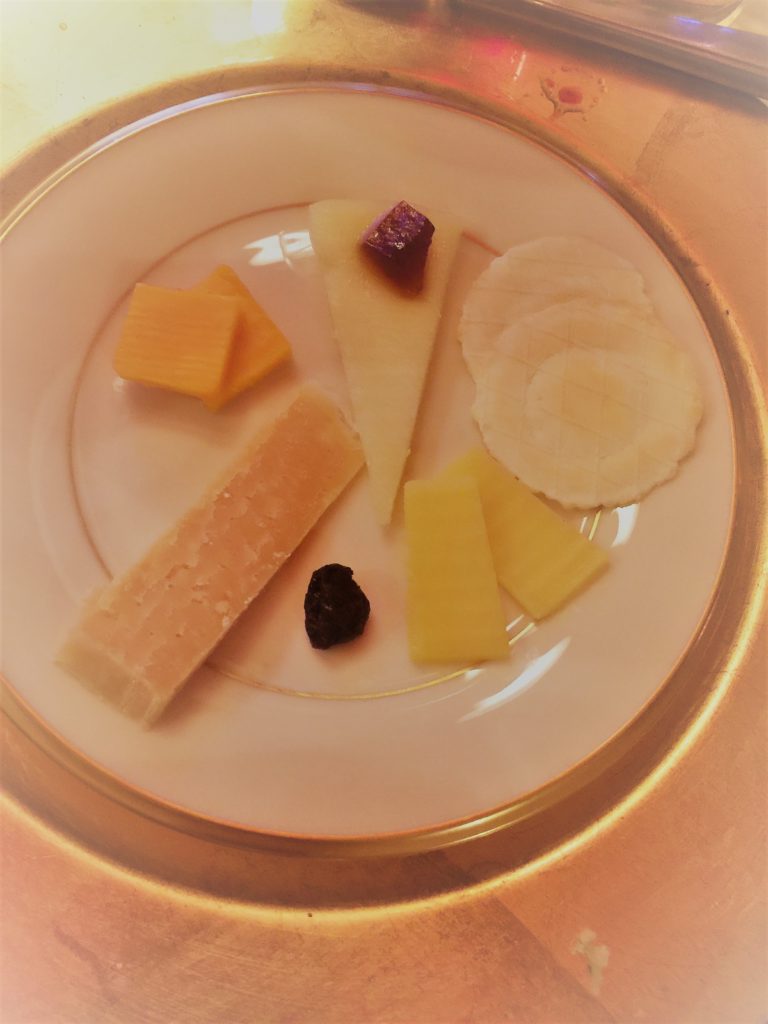

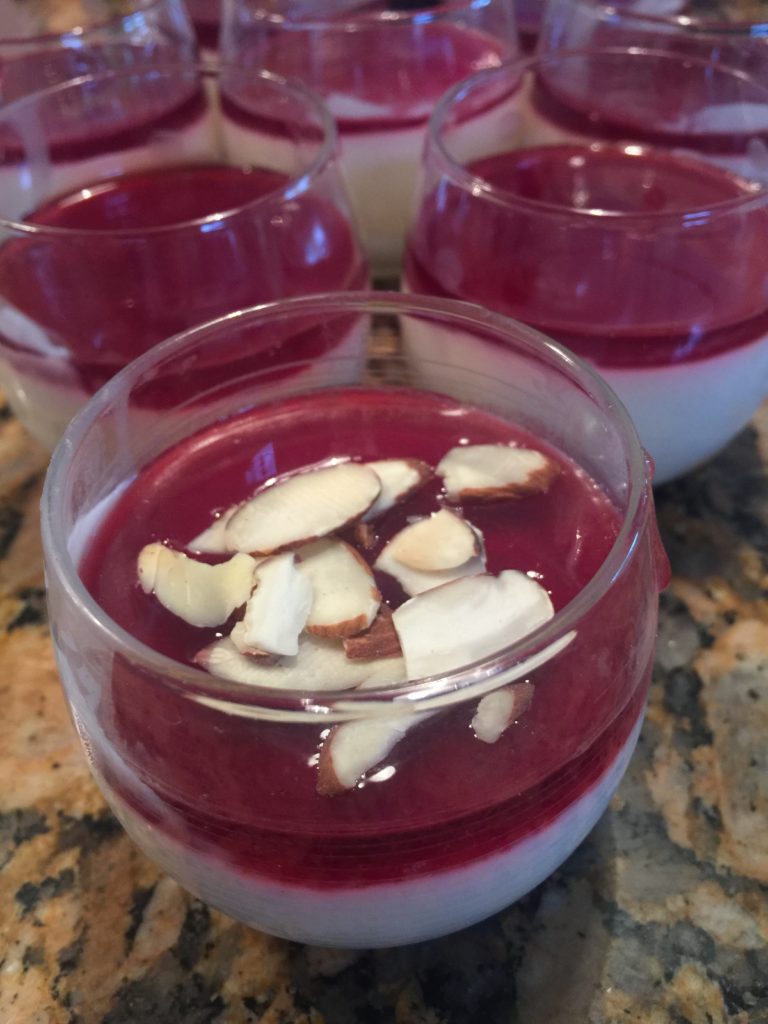
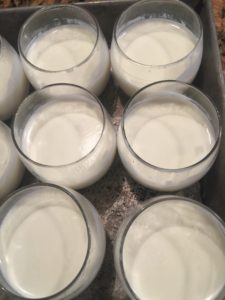
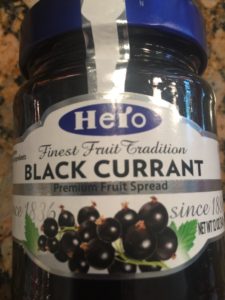




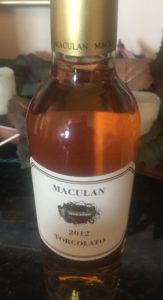

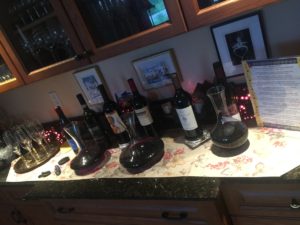

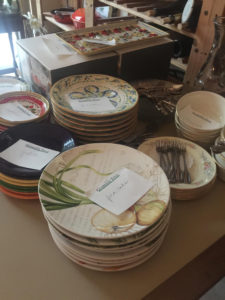
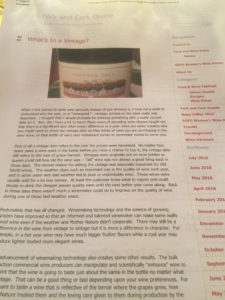
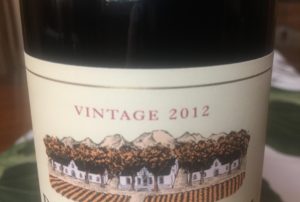
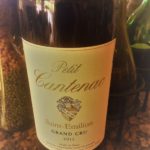
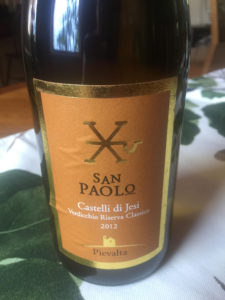
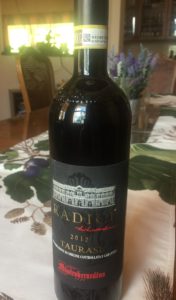
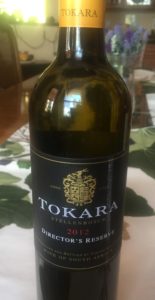
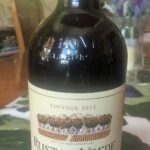
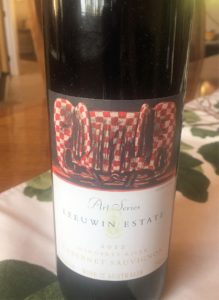


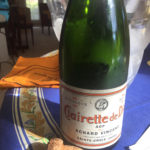

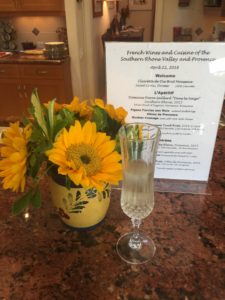
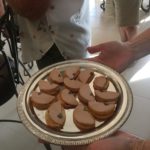


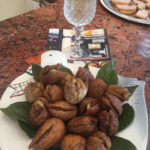
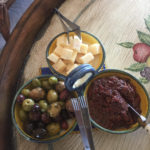




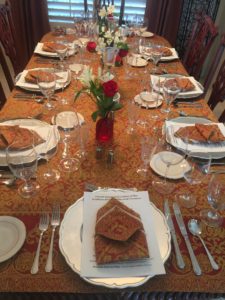
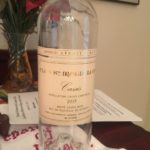
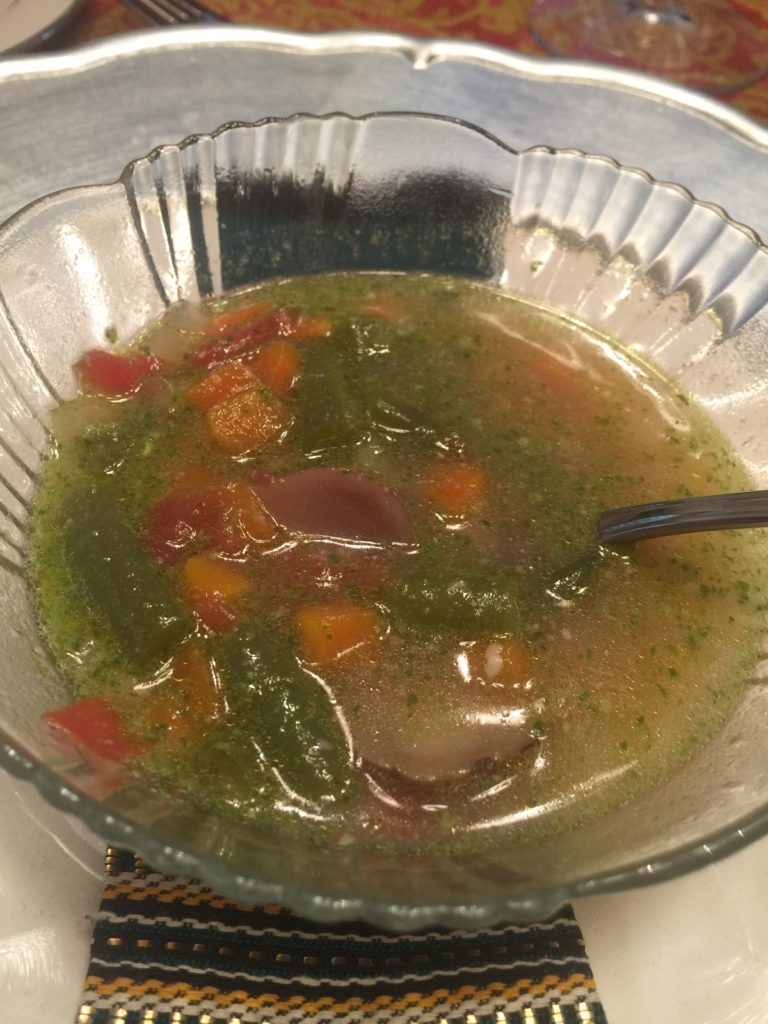
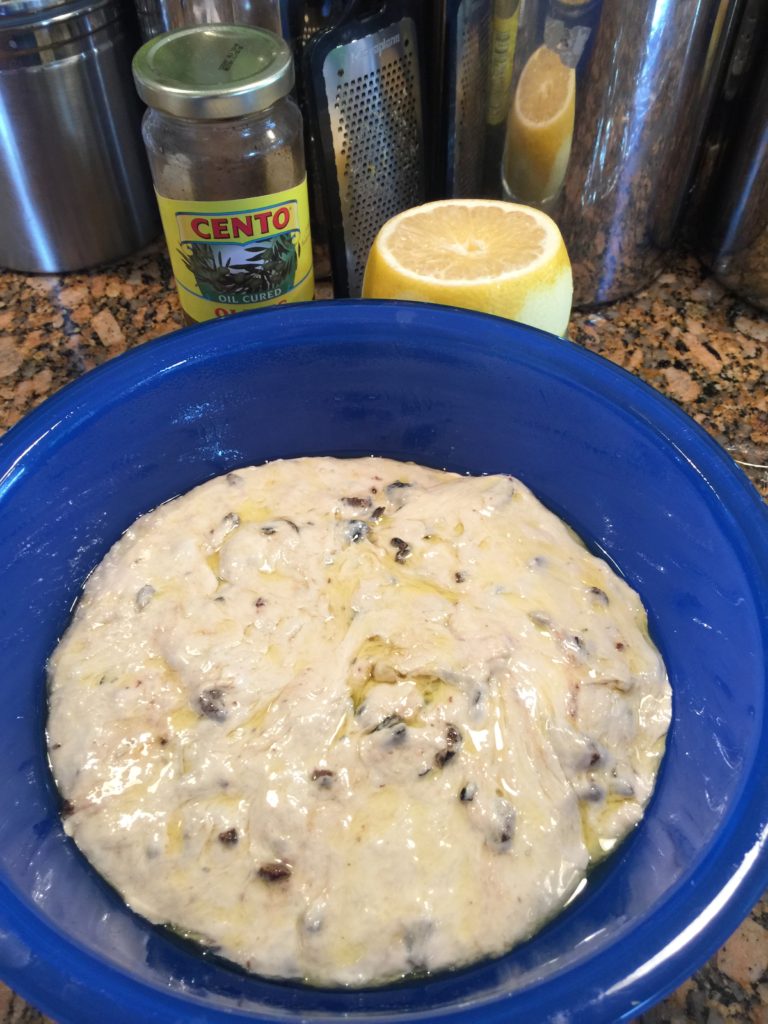



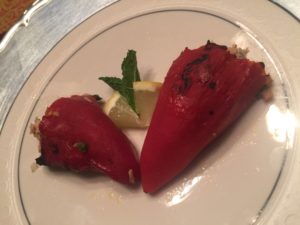
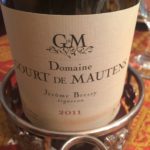
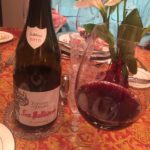
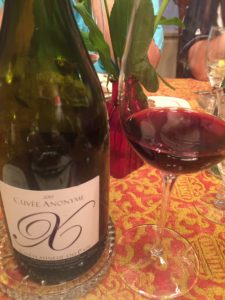
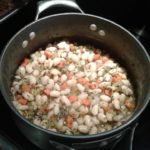
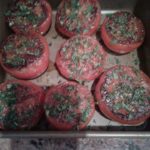

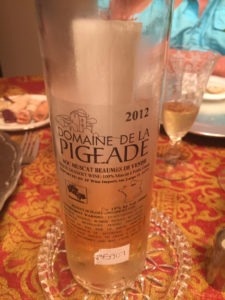


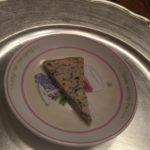
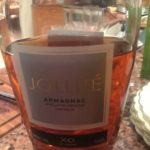
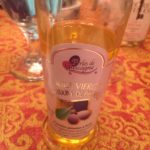
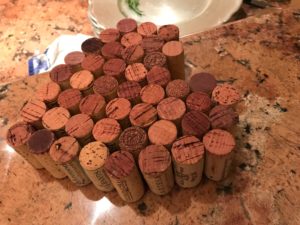

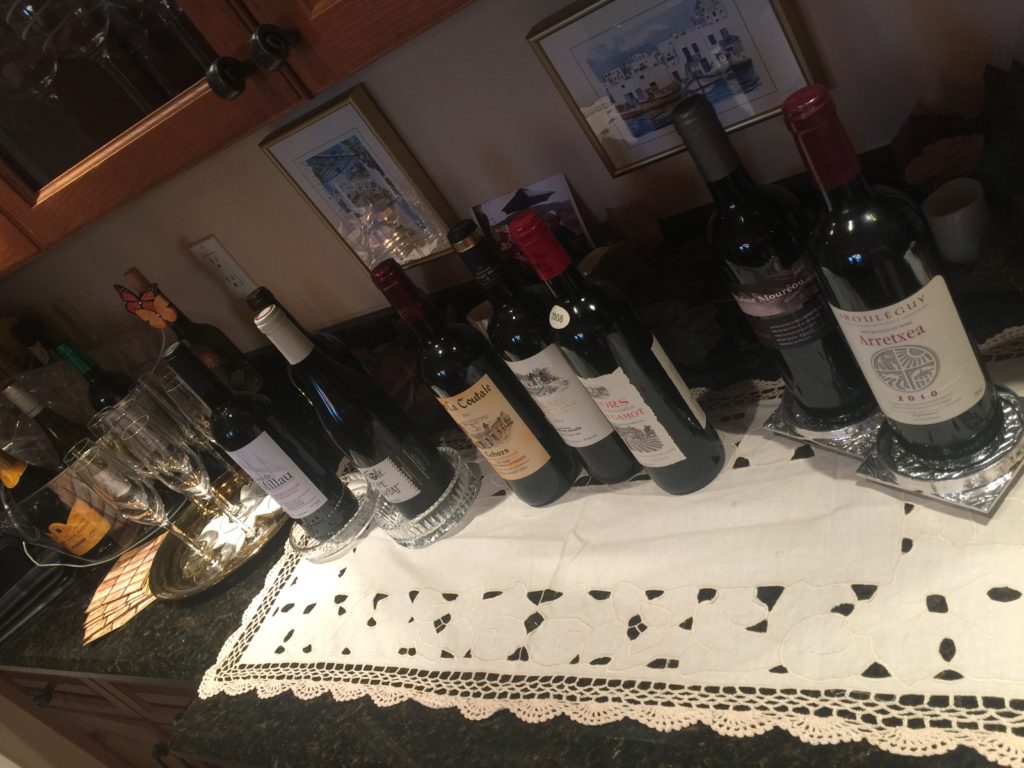
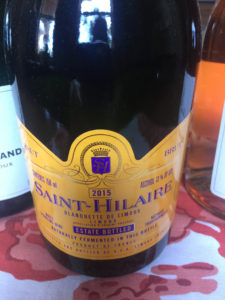
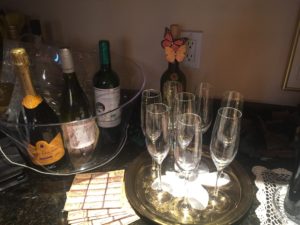
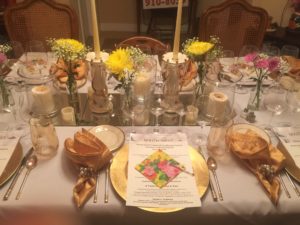
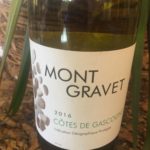

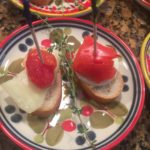
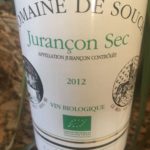
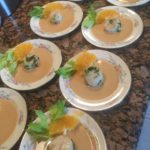
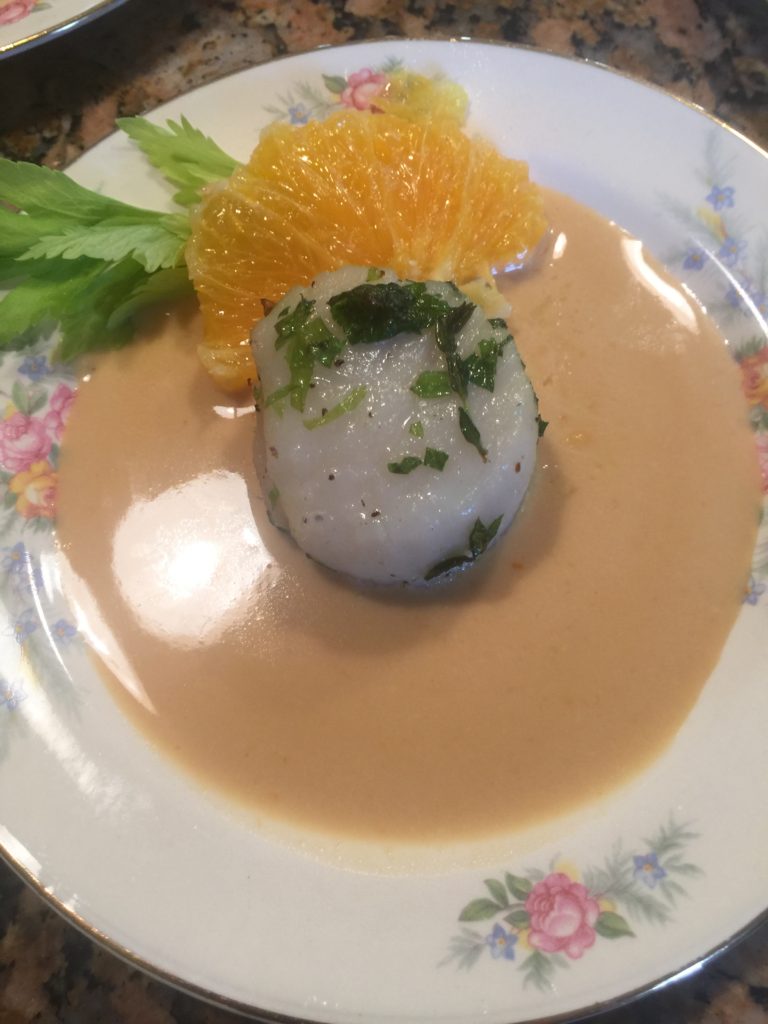
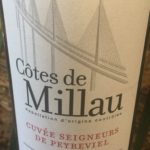
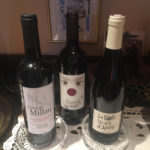
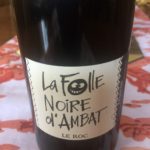
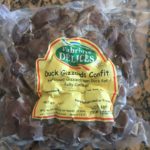
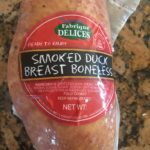
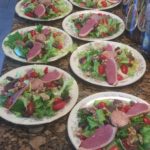
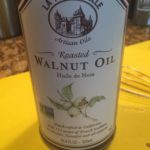
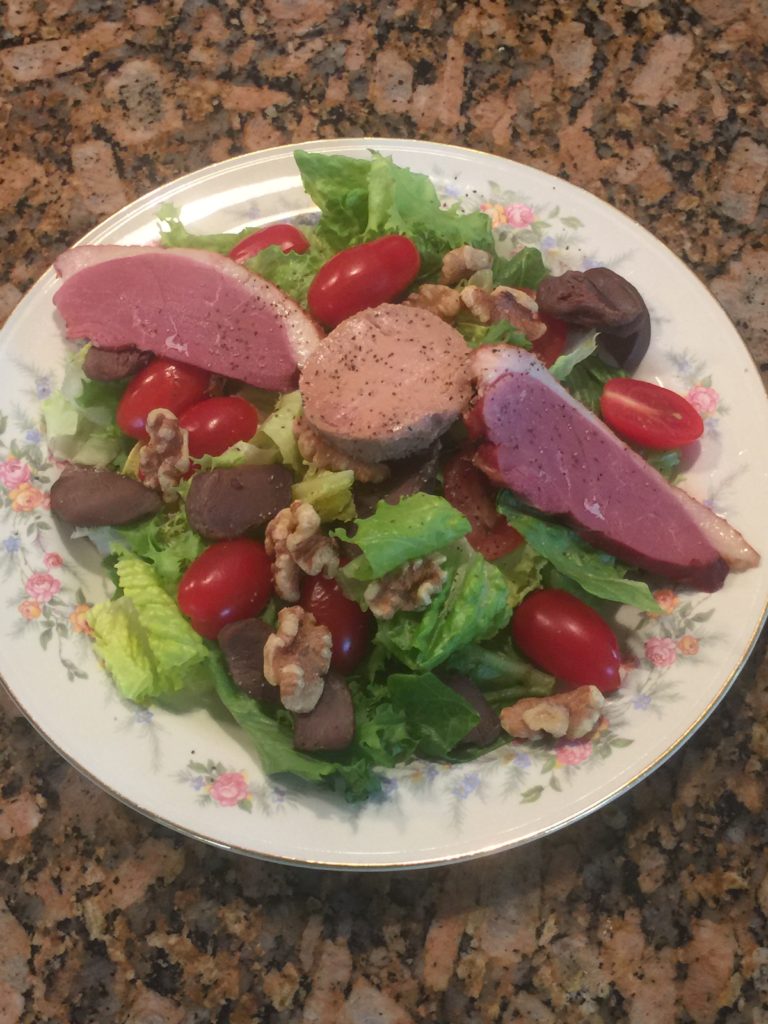


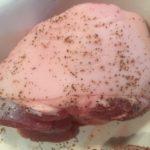
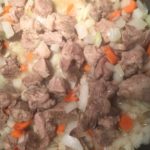
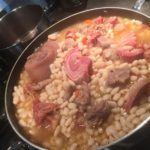
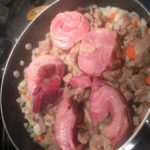
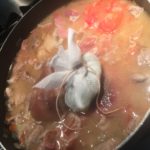


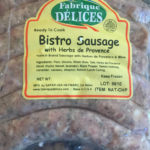


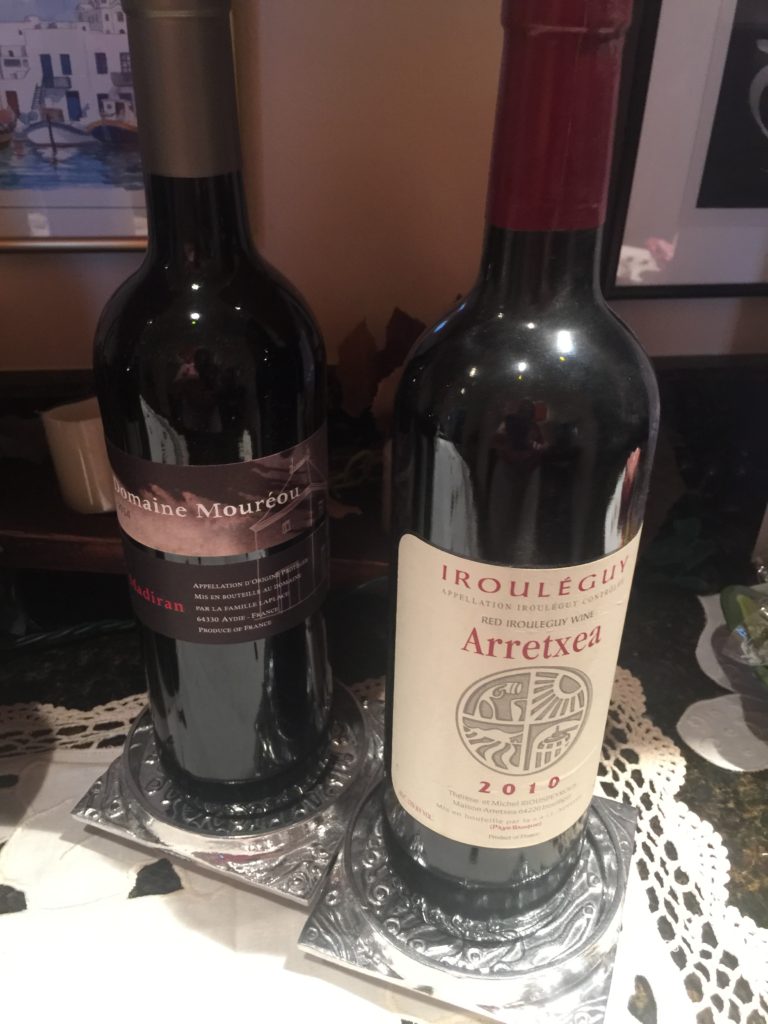
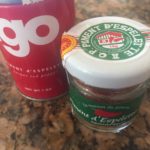
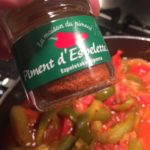
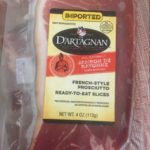
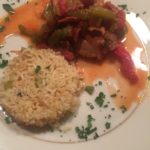
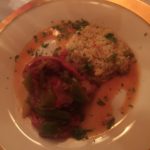
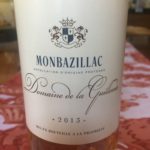

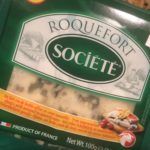
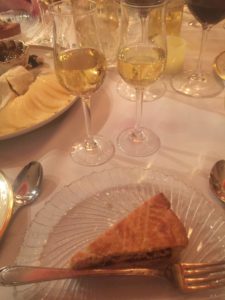

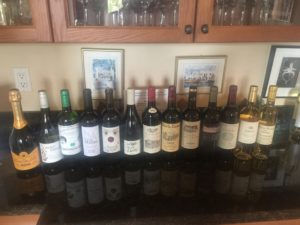
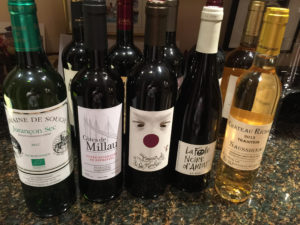
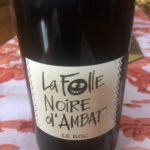
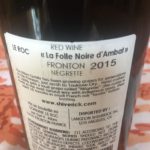
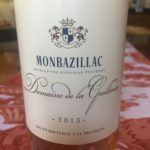
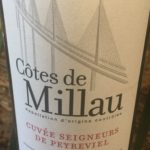
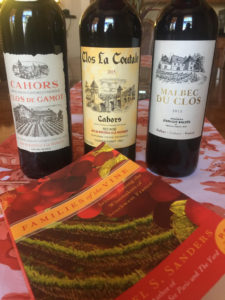
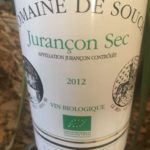
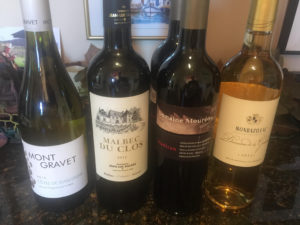
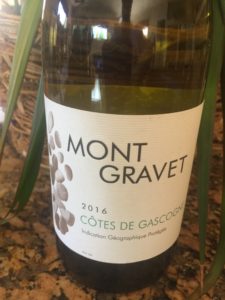
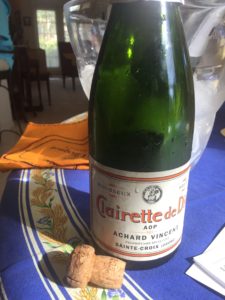
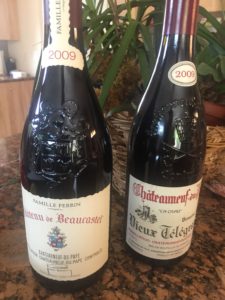
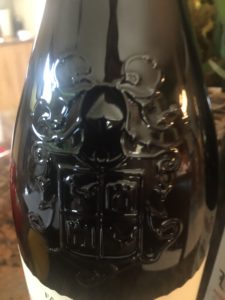

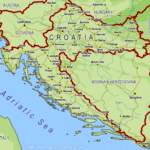
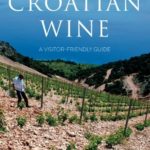
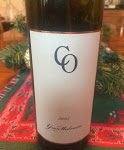
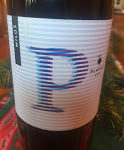
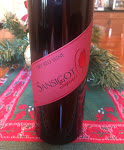
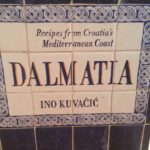
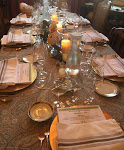
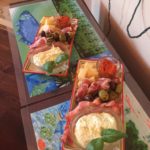
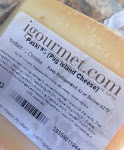

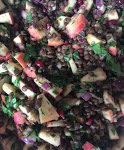
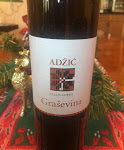
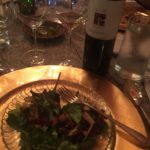
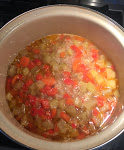
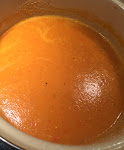

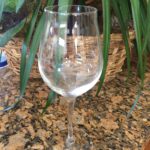
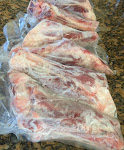
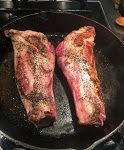
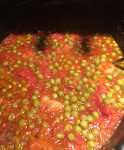
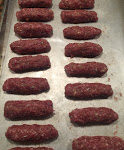
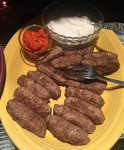

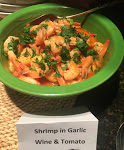
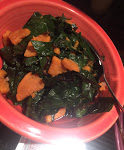

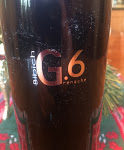
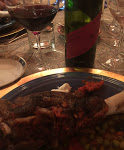
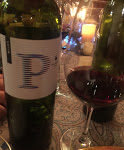

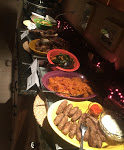
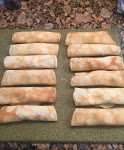
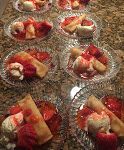
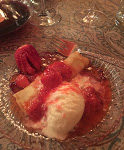
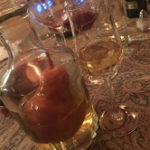
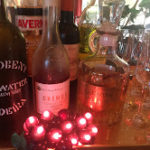
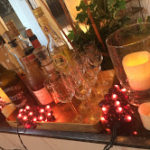
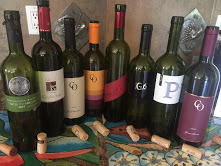
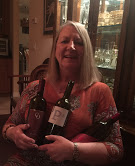
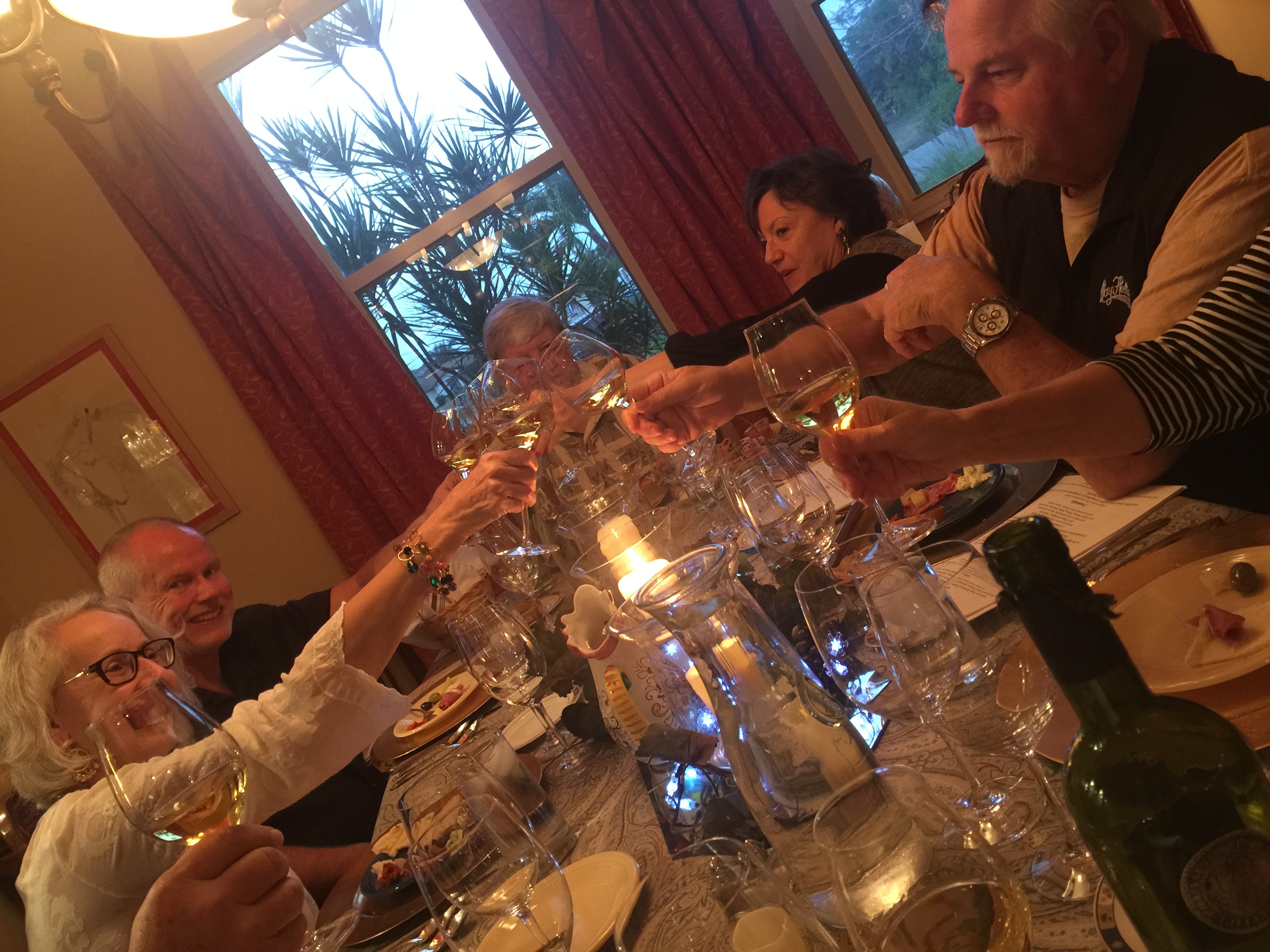




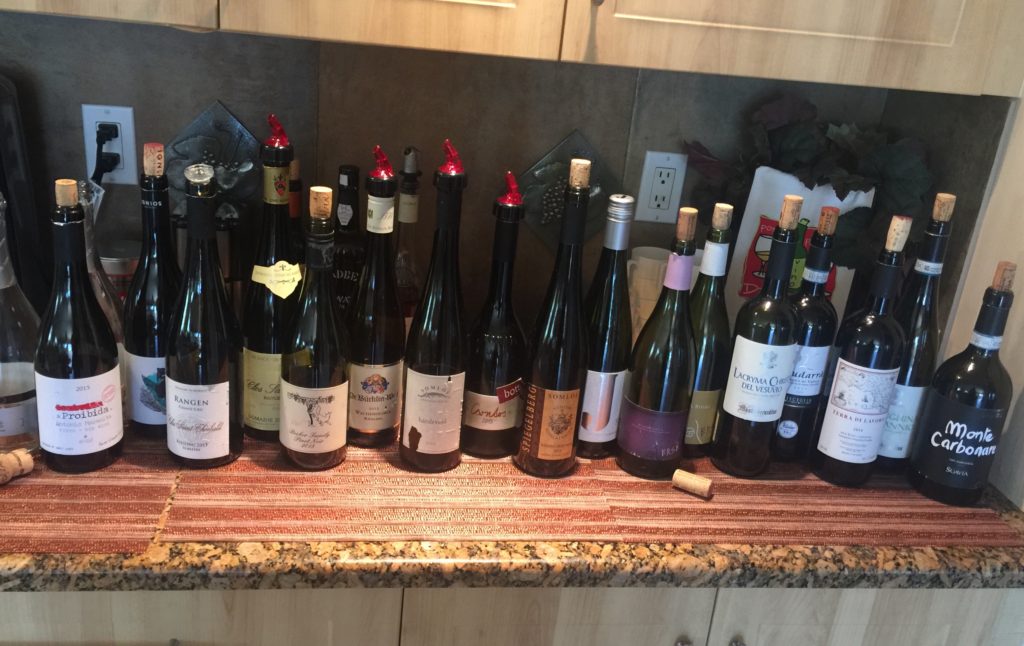
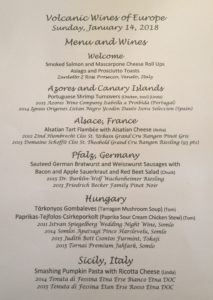

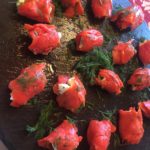
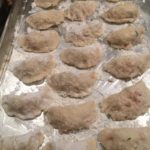


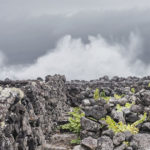
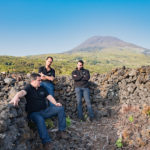
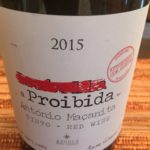
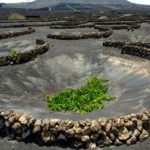
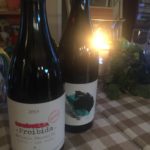
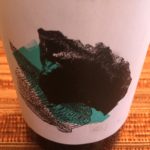

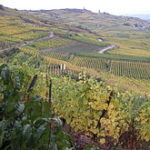
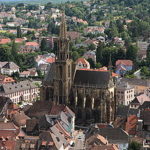

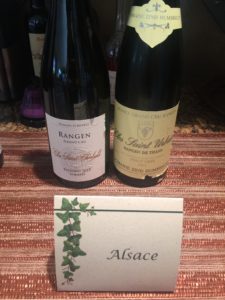
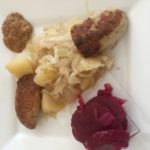

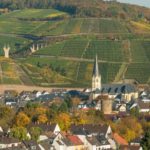
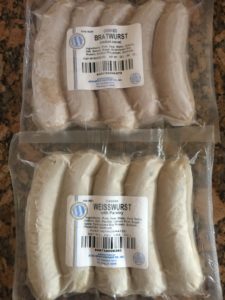
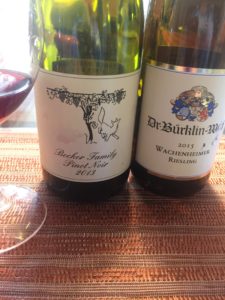
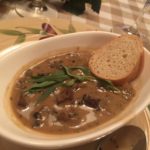


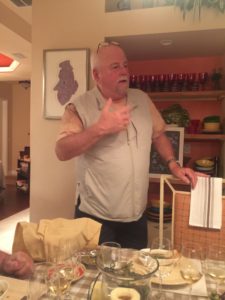
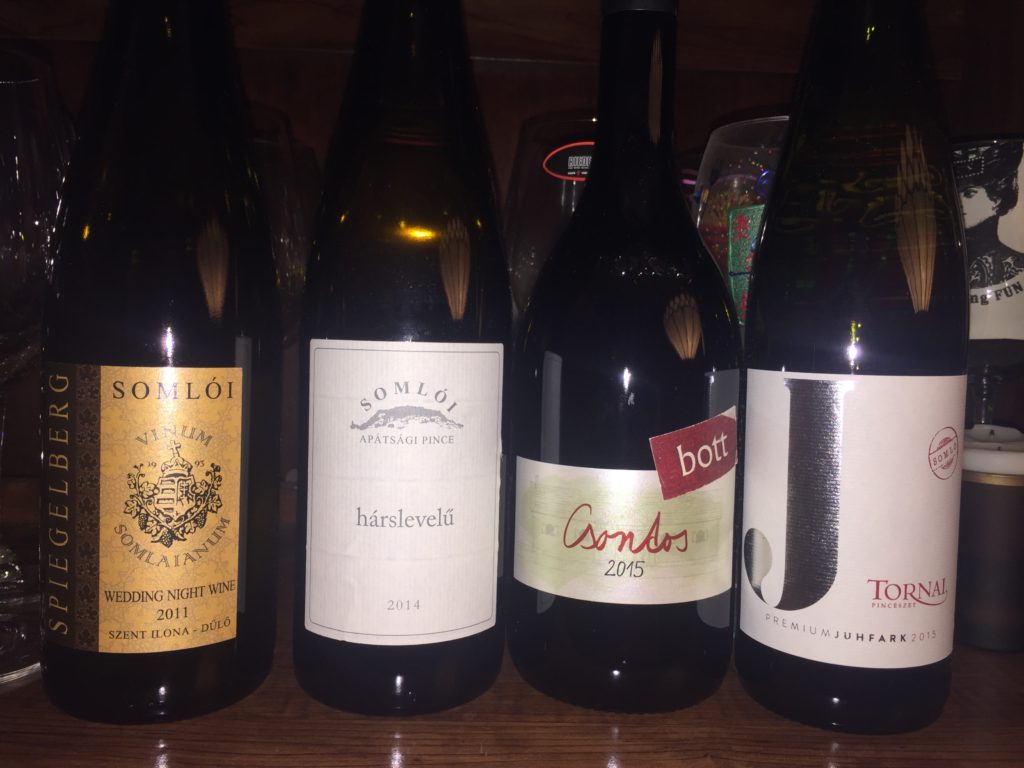
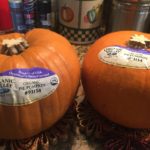

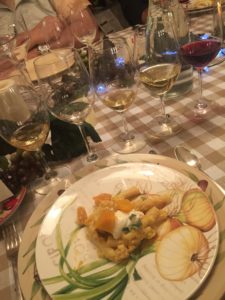
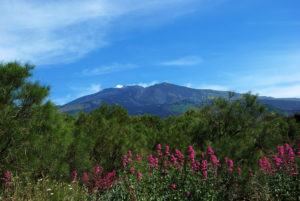

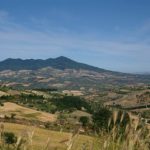


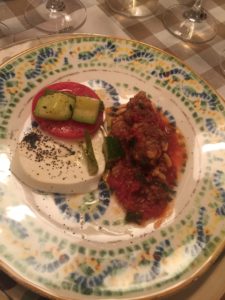
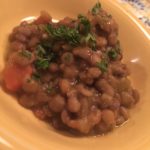
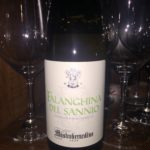
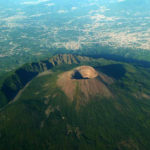

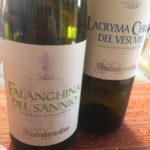
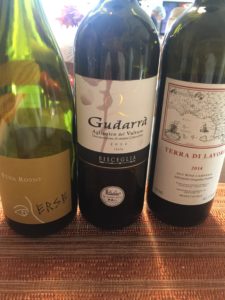
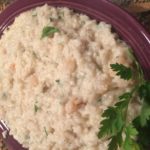
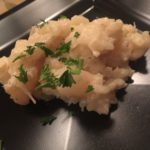

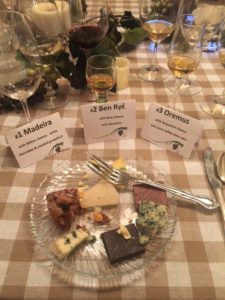
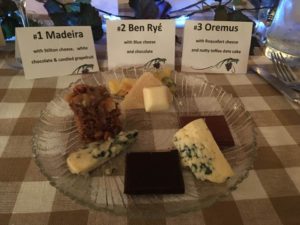


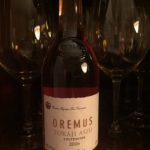
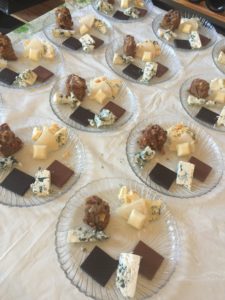
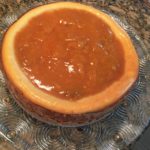

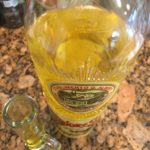
 Cooper, our “dinner in the vineyard” assistant who made our evening so much more enjoyable! Thank you, Cooper.
Cooper, our “dinner in the vineyard” assistant who made our evening so much more enjoyable! Thank you, Cooper. 
